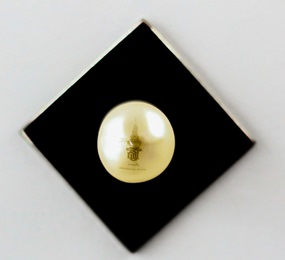BANGKOK – Dr. Nirawat Thammajakr, a researcher from the Synchrotron Light Research Institute or SLRI has been awarded for the invention of golden-color pearls, using synchrotron radiation technology.
So what is synchrotron light and how can it turn a pearl into gold?

The term ”synchrotron light” may sound somewhat too academic and remote from the people’s daily life. However, most people would know this radiation very well from their most famous application, the X-Ray. Synchrotron X-Ray is radiation projection, using a particle accelerator in place of a conventional X-Ray tube.
Compare to the conventional X-Ray, the synchrotron light is much brighter, with hundreds of thousands of times more intense than that from typical x-ray tubes and highly collimated. As such it can penetrate much deeper into the object and can be even used to gain information about the material’s composition, including the type and location of individual atoms within it.
This property is one of the key aspects that SLRI’s researcher used to give the typical fresh-water pearl its brilliant gold color.

The synchrotron light is used primarily in X-Ray absorption spectroscopy technique employed by SLRI’s 8th beam line to analyze the compound and atom structure which determine the color of the pearl which existed in very small quantity.
The SLRI is committed to the study of synchrotron light technology; the manipulation of color element to produce the accurate and desirable color jewelry is one of the many useful applications of this advanced X-ray and proves that the research into this field is still relevant and highly useful today.




